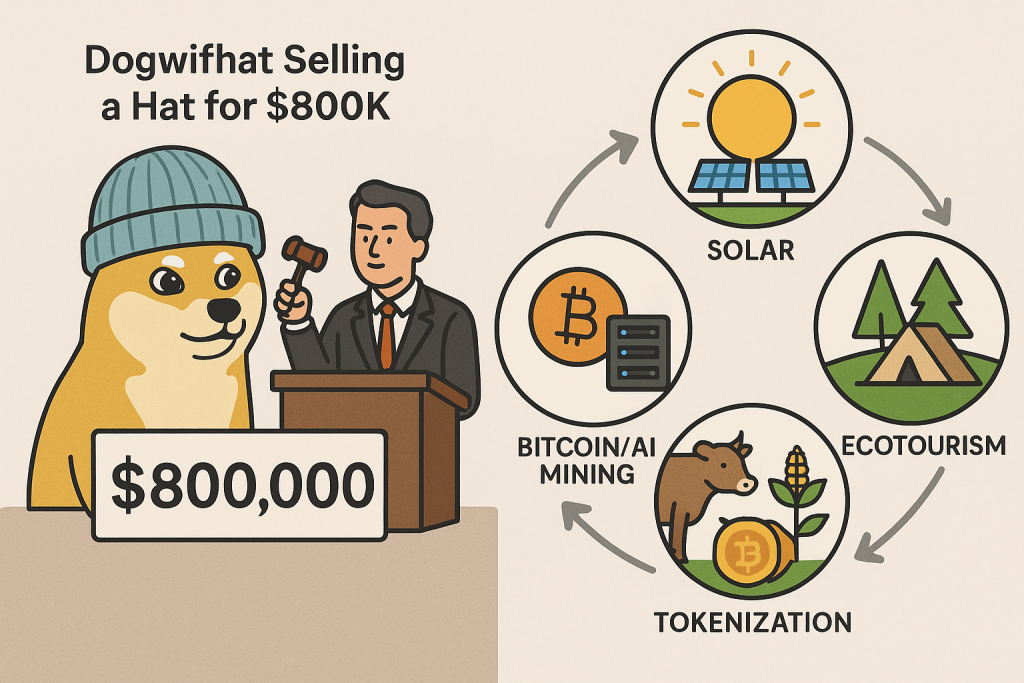
Not long ago, the world watched as a knitted hat tied to a memecoin sold for nearly $800,000 at auction. It’s an astonishing example of how narratives, communities, and speculation can create staggering value—even when the underlying asset is something as simple as yarn.
But here in Africa, the story is very different. In places like Namwala, Zambia, farmers struggle to secure even a few hundred dollars in financing for cattle or crops. These are not speculative assets. They are the lifeblood of families, communities, and entire economies.
This contrast raises a powerful question:
👉 What if the same energy that drives speculative memecoins could be redirected into real-world assets like food production, clean energy, and community wealth?
Royal Zambezi City: Turning Vision into Infrastructure
At Royal Zambezi City, we’re building more than a resort, a smart city, or an ecotourism hub. We’re building a financial engine designed to unlock liquidity for farmers, entrepreneurs, and communities across Zambia.
The model is simple yet transformative:
- Cattle and crop loans in Namwala will be tokenized on-chain, giving farmers access to credit that has historically been out of reach.
- These loans will be backed by real liquidity generated from ecotourism and solar power projects within Royal Zambezi City.
- The result is a self-sustaining financial ecosystem where global capital can flow into rural communities—not as charity, but as investment with measurable returns.
Why Cattle and Crops?
In Zambia, cattle are collateral and crops are cash flow. Farmers know how to grow, manage, and build wealth through these assets. What they lack is access to modern finance. Banks often see smallholder farmers as too risky, leaving them trapped in cycles of subsistence.
By tokenizing cattle and crops:
- Farmers can access affordable loans secured by their herds and harvests.
- Investors can participate in a transparent, blockchain-powered market.
- Communities gain resilience by connecting agriculture directly to global capital markets.
Liquidity Through Ecotourism and Solar
Royal Zambezi City is uniquely positioned to make this model work:
- Ecotourism will draw international visitors, generating foreign exchange that feeds into the financial system.
- Solar projects will not only power the city and reduce carbon emissions but also create new financial instruments (solar credits) that add further liquidity.
Together, these pillars ensure that the cattle and crop loans aren’t just backed by paper promises—they are supported by real, revenue-generating assets.
Building a Fairer Financial Future
The $800k hat may represent one kind of value creation, but Royal Zambezi City represents another. It’s about channeling creativity, community, and capital into projects that feed people, build cities, and empower farmers.
The future of finance doesn’t have to choose between memes and meaning. It can—and must—be both. But for us, the priority is clear:
🔹 Turn speculation into substance.
🔹 Back loans with livestock and harvests.
🔹 Build liquidity through solar and ecotourism.
🔹 Create prosperity in Namwala, and scale it across Africa.
Because the real revolution won’t be measured in knitted hats. It will be measured in herds, harvests, and human dignity.
👉 What do you think—can tokenized cattle and crops become the next billion-dollar asset class, not through hype, but through necessity?
#RoyalZambeziCity #Tokenization #CattleFinance #DeFi #ImpactInvesting #FutureOfAfrica
Leave a Reply